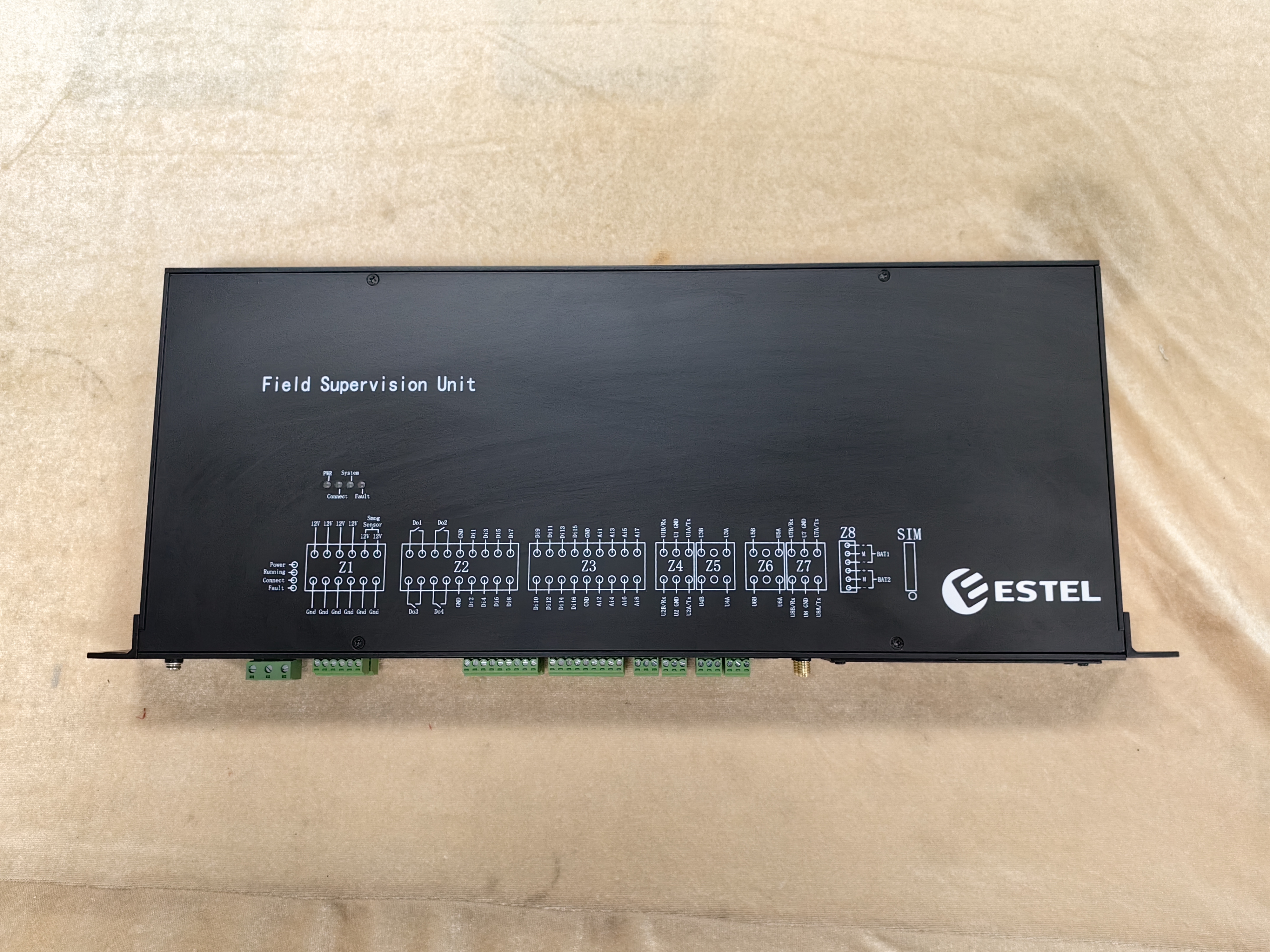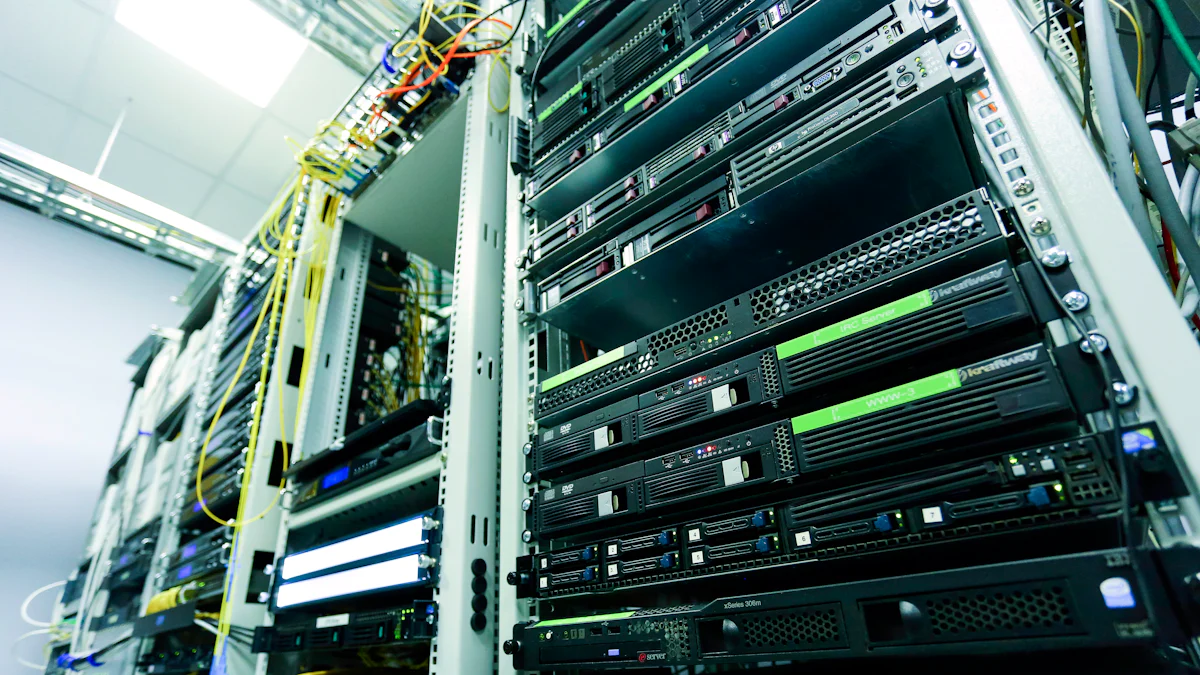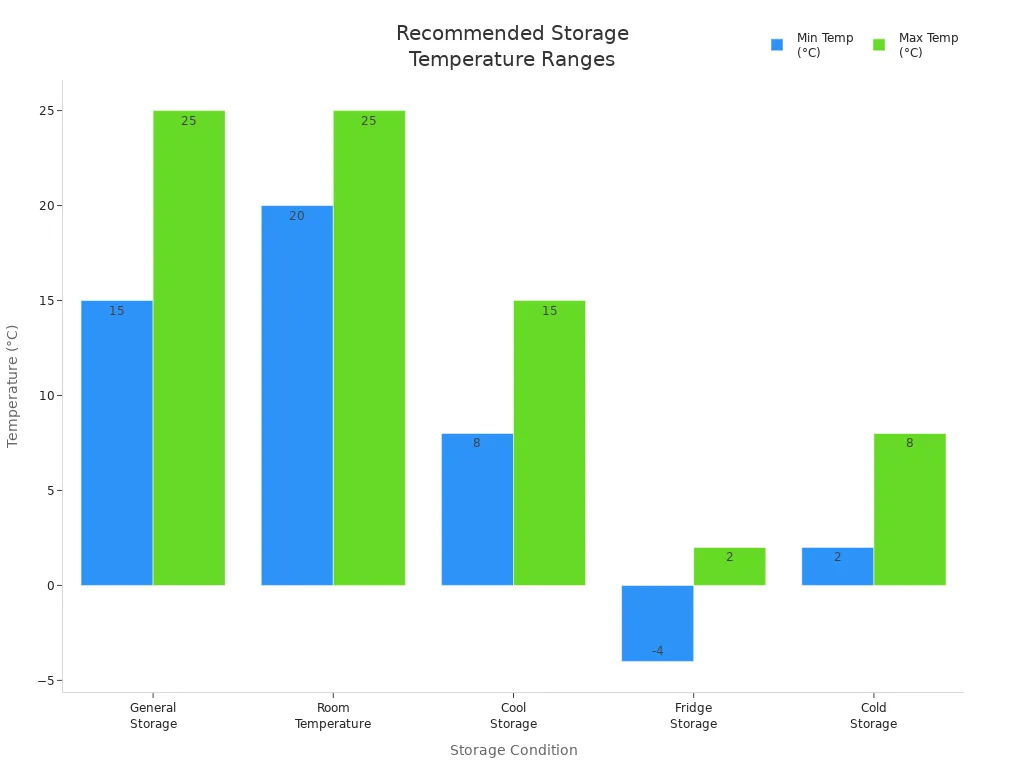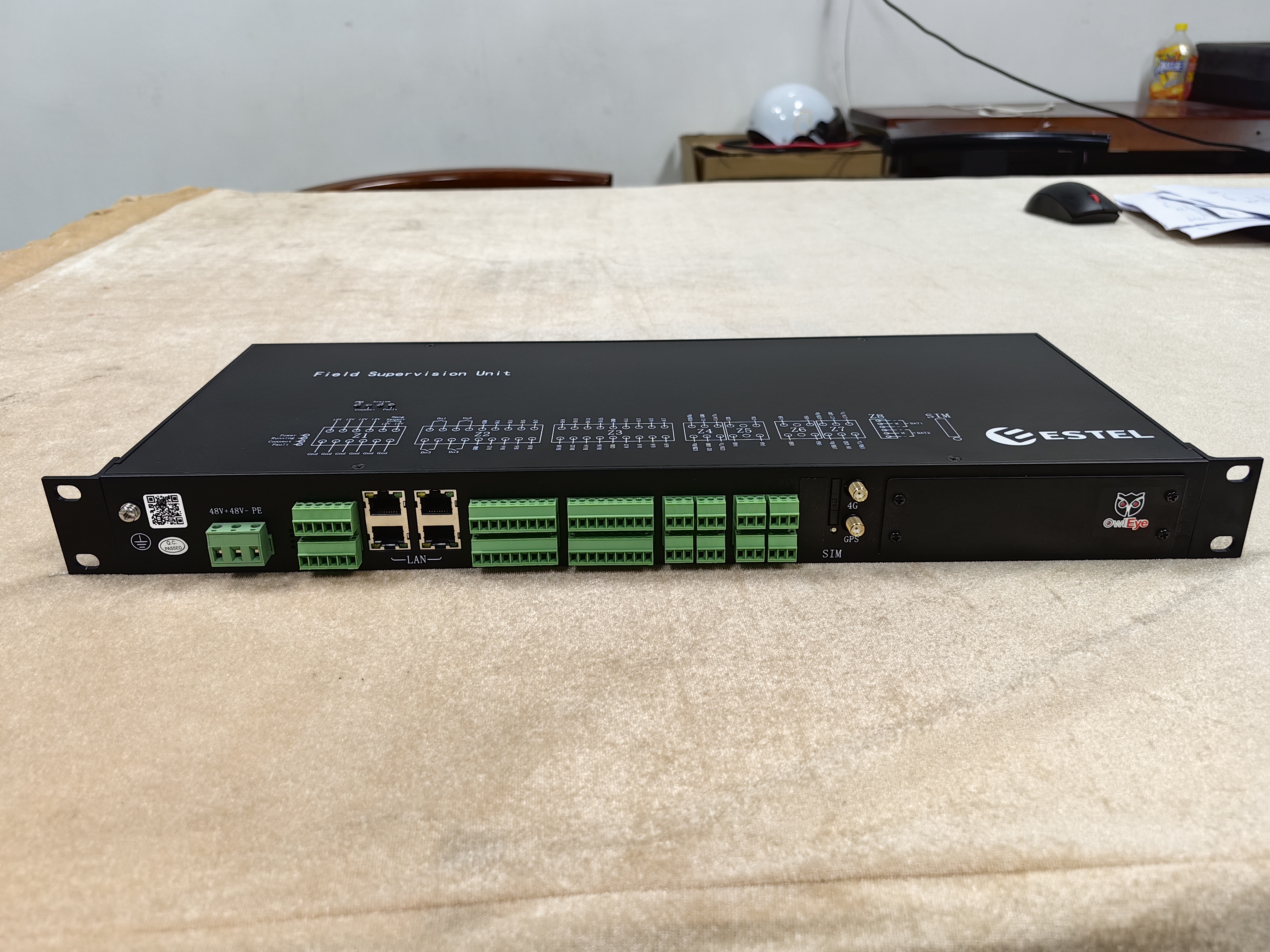Environment Monitoring System selection: 6 core parameters from room scale to equipment type

When you select an Environment Monitoring System, you must evaluate six core parameters: temperature, humidity, pressure, airflow, energy usage, and gas concentrations. Define your monitoring goals early, considering both room and equipment scale. Laboratories and industrial sites now rely on these systems for precise control and compliance, with the U.S. market projected to reach $6.1 billion by 2033. You should always match system features with your operational needs, regulatory requirements, and risk factors unique to your environment.
Key Takeaways
Focus on six core parameters: temperature, humidity, pressure, airflow, energy usage, and gas concentrations to ensure safe and efficient environments.
Choose monitoring scale wisely by assessing room-level and equipment-level needs to protect people, products, and machines effectively.
Use real-time data and automated alerts to detect problems early, respond quickly, and maintain compliance with regulations.
Monitor energy use to reduce costs, improve equipment efficiency, and support sustainability goals through continuous tracking and analysis.
Understand and follow industry regulations and perform regular risk assessments to keep your facility safe, compliant, and audit-ready.
Core Parameters Overview
Environment Monitoring System Basics
You rely on an Environment Monitoring System to track and control the conditions in your facility. The system uses a network of sensors to collect data on temperature, humidity, pressure, airflow, energy usage, and gas concentrations. These sensors send information to a central platform, where you can view real-time dashboards and receive alerts if something goes wrong. You can use this data to spot trends, identify risks, and make decisions that keep your environment safe and efficient.
Tip: Place sensors in critical zones to capture the most accurate and useful data.
A typical Environment Monitoring System includes several key functions:
Planning and sensor placement for accurate data collection.
Continuous data gathering from all sensors.
Secure transmission and storage of information.
Real-time monitoring with easy-to-read dashboards.
Automated alerts when conditions move outside safe limits.
Reporting tools to help you meet compliance requirements.
Ongoing analysis for continuous improvement.
Scale: Room vs. Equipment
You must decide whether to monitor at the room level, the equipment level, or both. Room-scale monitoring helps you control the overall environment, such as temperature and humidity in a laboratory or cleanroom. Equipment-scale monitoring focuses on specific machines or devices, tracking conditions like internal temperature or airflow to prevent failures.
Scale | What You Monitor | Why It Matters |
|---|---|---|
Room | Temperature, humidity, pressure, airflow, gas concentrations | Ensures safe, compliant, and stable environments for people and products |
Equipment | Internal temperature, energy usage, airflow, vibration | Protects assets, prevents downtime, and improves efficiency |
You improve safety and performance by matching your monitoring approach to your needs. The right Environment Monitoring System gives you the flexibility to scale up or down as your operations change.
Temperature & Humidity

Room Monitoring
You need to control temperature and humidity in every critical environment. In laboratories, precise management ensures reliable test results and supports compliance with FDA guidelines. Automated systems help you detect fluctuations quickly and respond before problems occur. When you involve all staff in monitoring, you reduce the risk of inaccurate results.
Temperature and humidity standards vary by environment. For example, data centers must keep temperatures between 64°F and 81°F and humidity between 20% and 80%, with an optimal range of 40% to 60%. This prevents equipment failure and data loss. Laboratories require even tighter control and continuous monitoring.
Environment | Temperature Range | Humidity Range | Key Considerations and Impacts |
|---|---|---|---|
Data Centers | 64°F to 81°F (18°C to 27°C) | 20% to 80% (optimal 40%-60%) | Prevents equipment failure, data corruption, and excessive energy use; reduces downtime and improves efficiency. |
Laboratories | Precise control required | Continuous monitoring | Ensures compliance and reliable results; uses automated systems to detect and respond to fluctuations quickly. |
Pharmaceutical and healthcare facilities also follow strict guidelines. The table below shows recommended storage conditions:
Storage Condition | Temperature Range (°C) | Temperature Range (°F) | Humidity Recommendation |
|---|---|---|---|
General Storage | 15 to 25 | 59 to 77 | Relative Humidity ≤ 60% |
Room Temperature | 20 to 25 | 68 to 77 | Relative Humidity ≤ 60% |
Cool Storage | 8 to 15 | 46 to 59 | Relative Humidity ≤ 60% |
Fridge Storage | -4 to 2 | 25 to 36 | Relative Humidity ≤ 60% |
Cold Storage | 2 to 8 | 36 to 46 | Relative Humidity ≤ 60% |

Tip: Place sensors at different heights and locations to capture accurate readings and avoid blind spots.
Equipment Monitoring
You must monitor temperature and humidity at the equipment level to protect sensitive devices and products. Smart sensor systems with remote access let you track conditions from anywhere. Cloud-based platforms help you integrate this data into your building management system.
Follow these best practices for equipment monitoring:
Install humidity control systems and use hygrometers to maintain proper levels.
Ensure good airflow by placing shelves strategically and maintaining vents.
Prepare for power outages with backup generators and insulated doors.
Schedule regular inspections and replace worn parts quickly.
Stay updated on regulations, keep accurate records, and perform audits.
You should monitor both temperature and humidity at the same time. Real-time alerts notify you if conditions move outside safe limits. Automated monitoring works better than manual checks and helps you prevent costly outages.
Note: Continuous monitoring reduces energy costs and improves efficiency in sensitive manufacturing processes.
Pressure
Ambient Pressure
You must pay close attention to ambient pressure in controlled environments. Cleanrooms and laboratories rely on precise pressure control to prevent contamination. Positive pressurization creates a buffer zone, keeping outside particles from entering sensitive spaces. Most cleanrooms maintain a differential pressure between 0.02 and 0.05 inches water gauge (WG) compared to adjacent areas. This small difference forms an air barrier that stops contaminants from moving into cleaner zones.
Continuous monitoring is essential because even opening a door or a change in wind can disrupt these delicate balances. Devices like Magnehelic gauges and advanced transmitters measure these low-pressure ranges with high accuracy. You should use cascading pressure, where the cleanest areas have the highest pressure, such as an ISO 5 glovebox inside an ISO 7 cleanroom. Positive pressure rooms protect products, while negative pressure rooms contain hazardous materials.
In healthcare, pressure monitoring protects patients and staff. Positive pressure rooms keep germs out, while negative pressure rooms trap harmful particles inside. Hospitals use HEPA filters, sealed construction, and real-time monitoring to maintain these conditions. You help ensure compliance and safety by keeping pressure within the recommended range.
Tip: Always check pressure sensors regularly to catch small changes before they become big problems.
Application-Specific Needs
Different industries have unique pressure monitoring requirements. You need to understand these needs to maintain safety and product quality.
Differential pressure monitoring controls contamination in cleanrooms by regulating airflow.
Positive pressure keeps contaminants out of semiconductor fabs and pharmaceutical cleanrooms.
Negative pressure contains hazardous materials in isolation rooms or dust-generating areas.
Advanced sensors detect tiny pressure changes, sometimes as low as 0.5 Pascals.
Sensors can trigger alarms and adjust HVAC systems automatically to maintain safe conditions.
Pressure monitoring supports compliance with strict standards like FDA and EU GMPs.
Early detection of pressure imbalances prevents contamination, equipment failure, and safety hazards.
Pressure control must work together with temperature and humidity management for best results.
You should always coordinate pressure monitoring with other environmental controls. This approach helps you protect products, people, and processes in any specialized facility.
Airflow
Distribution Patterns
You need to understand how airflow moves through your facility to maintain a stable and clean environment. In large-scale spaces, mechanical ventilation plays the main role in controlling airflow. When ventilation speeds go above 0.25 meters per second, forced convection takes over, and natural flows from heat or breathing become less important. The way you design your building—such as the shape and layout of columns, the position of air outlets, and the structure of the grid—directly affects how air moves.
Influence on Airflow Distribution Patterns | |
|---|---|
Column Form | Shapes like square or cross-shaped columns change how air attaches and loses energy. |
Column Layout | Single or multi-column setups affect how air spreads and mixes. |
Air Outlet Layout | The position and openness of outlets control where air converges and how well it mixes. |
Mechanical Ventilation Speed | Higher speeds can either mix air more or keep flows separate, depending on the setup. |
Building Grid Structure | The grid design sets where columns and outlets go, shaping airflow paths. |
Proper airflow distribution is critical in cleanrooms and labs. You want to keep air moving in a way that removes contaminants and keeps conditions stable. Unidirectional (laminar) airflow pushes particles out quickly, while turbulent airflow mixes air to dilute pollutants. The placement and size of supply and return air outlets also matter. For example, top-supply and side-return setups help remove particles better. Air exchange rates (ACH) are another key factor. Higher rates clean the air faster but use more energy.
Tip: Adjust air exchange rates and outlet positions to balance cleanliness and energy use.
Equipment Cooling
You must also manage airflow at the equipment level. Many machines, such as servers and lab instruments, generate heat during operation. If you do not cool them properly, they can overheat and fail. Good airflow design removes heat and keeps temperatures stable. Place equipment so that air can flow freely around it. Avoid blocking vents or stacking devices too closely.
Use dedicated cooling systems for high-heat equipment.
Check that fans and filters are clean and working.
Monitor airflow direction to prevent hot spots.
Schedule regular maintenance to keep systems efficient.
Proper airflow not only protects your equipment but also supports overall environmental stability. When you control both room and equipment airflow, you reduce risks and improve performance.
Energy Usage
Facility Consumption
You can achieve significant energy savings by monitoring and managing your facility’s energy use. Power monitoring systems collect real-time data, allowing you to spot inefficiencies quickly. For example, you might find that an old HVAC system uses more power than necessary or that lights stay on in empty rooms. By addressing these issues, you can reduce energy costs by up to 20%. Real-time data also helps you plan predictive maintenance, which extends equipment life and lowers repair expenses.
Here is a table showing typical energy savings for different facility types:
Facility Type | Typical Energy Savings (%) | Additional Notes on Savings and Benefits |
|---|---|---|
Manufacturing | 15-25 | Equipment optimization and load shifting; process improvements add 10-20% more savings |
Data Centers | 20-35 | Power usage effectiveness, cooling optimization, dynamic power management |
Commercial Buildings | 25-40 | Occupancy-based HVAC and lighting; demand response participation |
Overall Direct Energy Savings | 10-30 | Baseline reduction depends on facility and optimization level |
Comprehensive Optimization | 25-35 | Full system integration and advanced strategies |
Maintenance Cost Reduction | 20-40 | Condition-based maintenance reduces costs and extends equipment life |
Tip: Start with an energy audit to understand your current usage. Use the data to set goals and track progress.
Energy monitoring offers several benefits:
You can identify high energy consumption areas and upgrade equipment.
You can adjust schedules to reduce costs.
You can track energy use to meet regulations and avoid penalties.
You support sustainability by lowering your carbon footprint.
Equipment Efficiency
You should measure equipment efficiency to control energy use and improve performance. Several key metrics help you assess how well your machines use energy:
Power Usage Effectiveness (PUE): Compares total facility energy to IT equipment energy, important for data centers.
IT Usage Effectiveness (ITUE): Focuses on how efficiently IT equipment uses power.
Energy Reuse Factor (ERF) and Energy Reuse Effectiveness (ERE): Show how much energy gets reused within your facility.
Cooling Efficiency Ratio (CER): Measures how well your cooling systems remove heat compared to the energy they use.
Energy Intensity: Tracks energy used per unit of output, such as kWh per product.
Energy Efficiency Ratio (EER): Compares useful output to energy input, like cooling per energy unit.
You can use smart meters, sub-metering, and energy management software to collect and analyze this data. By monitoring significant energy uses, you can spot problems early and make improvements. Comparing current and past performance helps you see if changes work. Continuous monitoring ensures your equipment stays efficient and reliable.
Gas Concentrations
Safety Monitoring
You must monitor gas concentrations to protect people and maintain safe operations in many industries. Toxic, flammable, or inert gases can pose serious risks if levels rise above safe limits. Fixed and portable gas detection systems help you track these gases in real time. These systems alert you when dangerous concentrations appear, giving you time to act quickly. You often find electrochemical sensors used for detecting toxic gases like carbon monoxide and hydrogen sulfide. Infrared sensors (NDIR) work well for gases such as carbon dioxide and hydrocarbons. These technologies provide accurate and continuous data, helping you meet safety and regulatory requirements.
Tip: Use engineering controls like ventilation and sealed rooms along with gas monitoring to keep hazardous areas safe.
You must also follow strict safety standards. For example, OSHA regulations cover compressed gases, welding, and hazardous materials. The table below shows some key standards:
Industry | OSHA Standards Covered | Description/Focus Area |
|---|---|---|
Hazardous Materials | 1910 Subpart H (e.g., 1910.101, 1910.104) | Compressed gases and oxygen safety |
Compressed Gas and Air Equipment | 1910 Subpart M (e.g., 1910.169) | Air receivers and compressed air equipment |
Welding, Cutting, Brazing | 1910 Subpart Q (e.g., 1910.253, 1910.254) | Oxygen-fuel gas welding and cutting |
Commercial Diving Operations | 1910 Subpart T (e.g., 1910.430) | Diving equipment safety |
Application Examples
You see gas concentration monitoring in many real-world settings. In healthcare, advanced systems use AI and IoT to track oxygen, nitrous oxide, and carbon dioxide. These systems help doctors manage respiratory conditions and keep patients safe. Wearable sensors now harvest energy from body heat or movement, allowing continuous, non-invasive monitoring of gases in breath or skin emissions. This technology supports early detection of diseases and improves patient care.
In manufacturing, you use gas monitoring to control quality and safety. For example:
Firefighting teams rely on real-time air quality checks to detect carbon monoxide and moisture in breathing equipment.
Cheese producers monitor gases to optimize aging and improve shelf life.
Chemical plants track nitrogen flow for process accuracy.
The photovoltaic industry uses compressed air analyzers to keep oxygen out during solar cell production.
Pharmaceutical companies monitor compressed air to prevent contamination and meet ISO 8573 standards.
The table below lists commonly monitored gases in different industries:
Industry / Environment | Commonly Monitored Gases |
|---|---|
General Industrial & Laboratory | Carbon monoxide, carbon dioxide, ammonia, oxygen, hydrogen sulfide, chlorine, nitrogen, methane, sulfur dioxide, V.O.C.s |
Healthcare | Alcohol, formalin ethanol, V.O.C.s (toluene, xylene), methanol, ethylene oxide, glutaraldehyde, hydrogen peroxide, peracetic acid, nitrous oxide, oxygen, carbon dioxide |
Chemical Manufacturing | Ammonia, carbon monoxide, chlorine, hydrogen, hydrogen chloride, hydrogen sulfide, nitric oxide, nitrogen dioxide, sulfur dioxide, V.O.C.s |
Oil and Gas | Butane, benzene, methane, mercury vapor, hydrogen sulfide, sulfur dioxide, carbon monoxide, oxygen |
You improve safety, product quality, and compliance by monitoring the right gases for your environment.
Data & Alerts

Real-Time Data
You gain a major advantage when your Environment Monitoring System delivers real-time data. This capability lets you see environmental changes as they happen. You can spot problems early and act before they grow into bigger issues. Real-time data collection supports proactive risk management by identifying compliance issues immediately. You stay audit-ready because your system keeps continuous records, which reduces last-minute stress during inspections.
Here are some key benefits of real-time data collection:
You manage risks by catching compliance issues early and taking corrective action.
Continuous updates keep you prepared for audits at any time.
Automation saves you money by reducing manual work and avoiding penalties.
Up-to-date data helps you make better decisions and adjust operations quickly.
Automated records improve transparency and accountability.
Tip: Real-time monitoring also helps you track energy use and reduce waste, supporting your sustainability goals.
Modern systems use sensors, IoT devices, and cloud computing to collect and analyze data instantly. This technology gives you immediate feedback and helps you plan maintenance before equipment fails. You can also integrate real-time data with automatic measurement and control instruments, which allows your system to adjust conditions automatically for better safety and efficiency.
Alert Systems
Effective alert systems are essential for early detection of environmental anomalies. You need alerts that notify you right away when something goes wrong. Many systems use machine learning to analyze sensor data and detect unusual patterns. This approach improves early warning capabilities and helps you respond faster.
Some alert systems combine data from multiple sources, such as wildlife monitoring or water quality sensors. These systems process information in near real-time and send notifications when they detect problems. You benefit from timely alerts that support rapid response and situational awareness.
Machine learning models can spot temperature spikes, gas leaks, or pressure drops.
Event-based surveillance systems use standardized data entry to improve detection speed.
Integration with control instruments allows automatic adjustments when alerts trigger.
You also need to consider compliance, audit trails, and data security. Automated alerts and records help you meet regulatory requirements and keep your data safe. Reliable alert systems make your Environment Monitoring System more responsive and help you maintain a safe, compliant environment.
Compliance & Risk
Regulatory Needs
You must understand the regulatory landscape before you select or implement an Environment Monitoring System. Each industry has its own set of standards and guidelines. In pharmaceuticals, you follow EU GMP Annex 1, FDA aseptic processing guidance, and WHO cleanroom requirements. These rules focus on cleanroom monitoring, microbiological control, and risk-based plans. Food processing facilities use ISO 22000 and HACCP to manage microbial risks, especially in aseptic packaging. Data centers and modular cleanrooms rely on ISO 14644 and cGMP for air quality and environmental control.
Industry | Key Regulations & Standards | Focus Areas |
|---|---|---|
Pharmaceuticals | EU GMP Annex 1, FDA, WHO, PDA TR 13R | Cleanroom, microbiological, risk-based plans |
Food Processing | ISO 22000, HACCP, ISO 14644 | Microbial control, aseptic packaging |
Data Centers | ISO 14644, cGMP, USP <797>/<800> | Air quality, pressure, documentation |
You need to maintain accurate records, calibrate equipment, and document every process. Regulatory bodies expect you to keep thorough documentation for audits and validation. You also face challenges like alert overload, complex monitoring rules, and managing compliance across multiple standards. Assign clear roles and responsibilities to avoid confusion and ensure compliance tasks are completed.
Tip: Regular internal audits and inspections help you identify and fix compliance gaps before they become bigger issues.
Risk Assessment
You must assess risks to protect your facility and meet compliance requirements. Start by identifying hazards such as temperature extremes, humidity, dust, or electromagnetic interference. Use risk assessment tools like HACCP and FMEA to evaluate the probability and severity of contamination or equipment failure. Quantitative Risk Assessment (QRA) uses data and statistics to estimate the likelihood and impact of hazards. Qualitative methods rely on expert judgment for risks that are harder to measure.
FMEA helps you find and prioritize possible failure points in your process.
Environmental Impact Assessment (EIA) predicts and manages the effects of your operations.
Safety Integrity Level (SIL) assessment focuses on safety-critical systems and compliance verification.
Choose the right method based on your facility’s needs, available resources, and regulatory requirements. Engage stakeholders and update your risk framework regularly to adapt to changing conditions. Continuous monitoring and maintenance of your Environment Monitoring System ensure you stay ahead of risks and maintain compliance.
You improve decision-making when you focus on the six core parameters during Environment Monitoring System selection. Matching system features to your facility’s scale and compliance needs ensures accurate monitoring and audit readiness. Recent case studies show that AI and collaboration drive better data analysis and adaptability. Before you choose a system, define your goals, assess risks, and involve stakeholders.
Next steps include setting clear objectives, assigning roles, and developing monitoring programs for continuous improvement.
FAQ
What is the main benefit of real-time environment monitoring?
You get instant updates on your facility’s conditions. This helps you spot problems early and take action before they cause damage or safety issues.
How often should you calibrate your sensors?
You should calibrate sensors at least once a year. Some industries require more frequent checks. Always follow the manufacturer’s guidelines and your industry’s regulations.
Can you integrate an Environment Monitoring System with other building systems?
Yes, you can connect most monitoring systems with building management platforms. This allows you to automate controls and improve efficiency across your facility.
What happens if a sensor detects a dangerous condition?
Your system sends an alert right away. You can receive notifications by email, text, or alarm. This fast response helps you protect people, equipment, and products.
See Also
Building A Communication Room That Complies With Industry Norms
A Guide To Integrating Supervision Systems In ESTEL Cabinets
Enhancing Outdoor Cabinets Through Power, Cooling, And Monitoring
Selecting The Ideal Cooling Solution For ESTEL Telecom Cabinets
Ensuring Effective Monitoring For Outdoor Telecom Cabinets Performance
CALL US DIRECTLY
86-13752765943
3A-8, SHUIWAN 1979 SQUARE (PHASE II), NO.111, TAIZI ROAD,SHUIWAN COMMUNITY, ZHAOSHANG STREET, NANSHAN DISTRICT, SHENZHEN, GUANGDONG, CHINA


